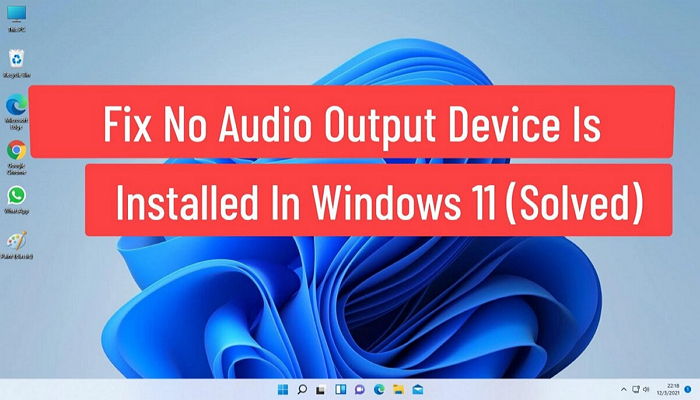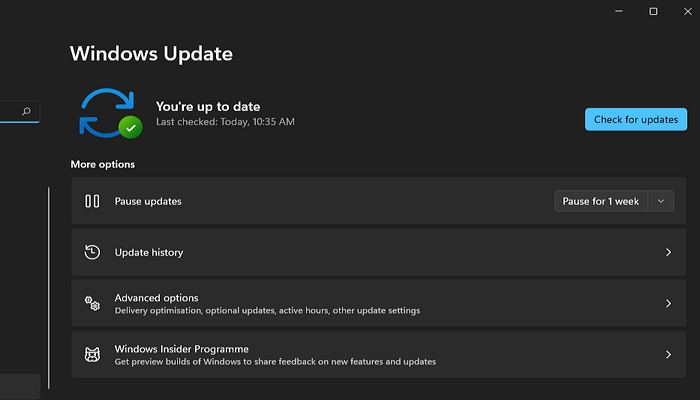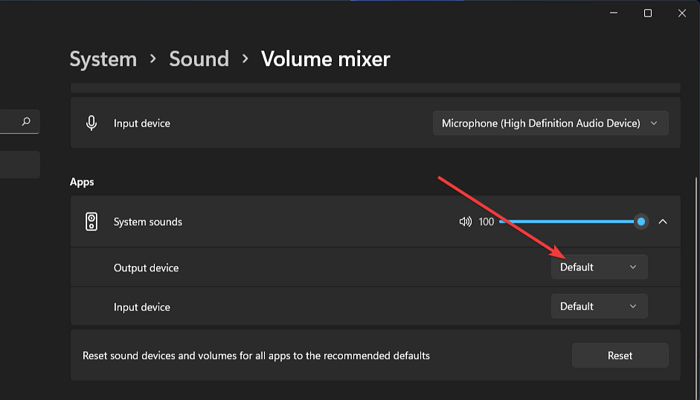Ever since the update of the Windows 11 Operating System (OS), it has been the talk of the town regarding the great features that came with it. However, there is a particular issue that was being detected by users like you making use of the Windows 11 Operating System, whereas the issue is nothing else but – No Audio.

The No Audio or Sound issue was identified after the initial Windows of a computer system was updated to the latest Windows 11. So, if you are also in this situation, then don't panic. In this post, we help you to find the solution on how to fix no audio in Windows 11 by the use of four different methods. Therefore, let us list the four methods.
4 Methods to Fix No Audio in Windows 11
Let us discuss briefly in detail the steps you need to follow to execute each method appropriately.
Method 1. Update your audio device's driver
To update your audio device's driver, you should take note that you can either update it manually or automatically. An outdated driver is one of the reasons for the no audio issue in Windows 11. So, to fix this issue, you need to update your device's driver to the latest, and also ensure that the driver is very compatible with your computer.
When it comes to updating your audio device's driver manually, follow the detailed steps below:
Update the device's driver manually
Step 1. Launch Device Manager on your PC. Then, Double click Audio inputs and outputs located in Device Manager. Right-click your computer's specific audio device from the drop-down Audio inputs and outputs option, such as Speakers (High-Definition Audio Device), then choose Update driver.

Step 2. After that, click the Search automatically for drivers option.

Update the device's driver automatically
Updating your device's driver automatically involves the use of third-party software. Third-party software will help you scan your computer and show you what devices on it needs new drivers to be installed.
However, once your device's audio type is detected, then you can decide to choose to download and install the latest driver for the audio by using third-party software.
Method 2. Update your PC's Windows 11
To get started with updating your PC's Windows 11, follow the steps below to get it done the right way:
Step1. Click the magnifying glass taskbar symbol located below the desktop area to display the Windows 11 search bar utility.

Step 2. Input the word – Windows update in the displayed search box. Then select Windows update settings which are denoted by Advanced options to open the tab shown below.

Then click the Check for updates button to download and install any newly found patches for Windows 11.
Method 3. Restart the Windows 11 audio service
Follow the step-by-step process below to execute this method which is restarting the Windows 11 audio service.
Step 1. First of all, right-click the Start button located at the taskbar and click on the Run shortcut that is found on the open menu.

Step 2. Type in services.msc in the Run's Open box, and click OK to open Services. Then right-click the Windows Audio service and choose Restart as shown. Moreover, it is also important for you to ensure you double-click these audio services to verify that their Startup Type option is Automatic.

Method 4. Change audio options in sound settings
After having explained the first, second, and third methods, this is the last method to be discussed in detail. Ready? Then, let us get started.
This method involves changing the audio option in sound settings to fix the No Audio issue in Windows 11. So, how do you change the audio options in sound settings? Gently follow the step-by-step guide below to figure it out!
Step 1. First of all, right-click the speaker icon symbol in the desktop area of Windows 11, and choose Sound settings.

Step 2. Click on Choose where to play sound to display the drop-down category. Select the sound output you are utilizing as default and ensure that the volume is not muted by clicking the Unmute speaker button located at the Volume bar.

Step 3. Adjust the Volume bar to the right if it is positioned a long way to the left. Then Click the Audio option to enable it and choose Volume mixer in the advanced settings to direct you to the Volume mixer path.

Step 4. At this step, check again to make sure the Volume and System sound bars are adjusted fully to the right. Then, select system sounds to display its drop-down menu options. Make sure you choose Default at the Output device menu as shown.

Conclusion
In conclusion, the four methods discussed in this post will help you to fix any No Audio issue you ever encounter in Windows 11. Hence, you won’t ever suffer from this issue anymore by following the step-by-step guides explained in this blog post. Note that, you can try any of these methods to find out which one works best for your situation.
Was This Page Helpful?
Daisy is the Senior editor of the writing team for EaseUS. She has been working at EaseUS for over ten years, starting as a technical writer and moving on to being a team leader of the content group. As a professional author for over ten years, she writes a lot to help people overcome their tech troubles.
Related Articles
-
How to Fix Asus Laptop Black Screen with 11 Efficient Ways
![author icon]() Cici/2025-01-24
Cici/2025-01-24 -
9 Ways to Fix "The Remote Computer Requires Network Level Authentication"
![author icon]() Daisy/2025-01-24
Daisy/2025-01-24 -
How to Delete Bookmarks on Mac | Remove Favourites
![author icon]() Dany/2025-01-24
Dany/2025-01-24 -
Star Wars Outlaws Save Location - Where to Find & How to Backup?
![author icon]() Jerry/2025-01-24
Jerry/2025-01-24
EaseUS Data Recovery Services
EaseUS data recovery experts have uneaqualed expertise to repair disks/systems and salvage data from all devices like RAID, HDD, SSD, USB, etc.